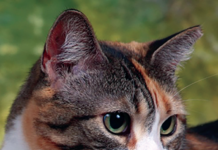The Abyssinian, with its remarkable ticked tabby coat pattern, resembles the wild ancestors of todays domestic cats and has enough energy and vitality to remind you that mild can imitate wild. Playful and bold, yet gentle and extremely companionable, Abyssinians delight so many cat fanciers that they are one of the most popular shorthaired breeds in the United States.
No one can be certain where the Abyssinian originated, but there are numerous theories. Some fanciers like to think the Aby is a descendant of cats worshiped by the ancient Egyptians over 4000 years ago. The 1972 Cat Fanciers Association Yearbook noted, The Abyssinian is more at home on the Thames than on the Nile.
And indeed, the Abyssinian was developed and refined by British cat fanciers beginning in the last half of the nineteenth century. In Cats, Their Points, Etc., by Dr. Gordon Staples, published in England in 1874, there is a colored lithograph of a ticked cat, reportedly brought from Abyssinia at the conclusion of the (Abyssinian) war… By 1882, Abyssinians were considered to be a separate breed. Later, British cat fanciers renamed the breed British Ticks or Bunny Cats since it was believed that these cats were most probably the descendants of ordinary British shorthairs with a ticked tabby coat pattern. The first Abys arrived in the US from England in the early 1900s, and were exhibited in Boston in 1909. Many more were imported in the 1930s. Since World War II, the breed has fully come into its own on both sides of the Atlantic.
The Abyssinians most distinctive feature is her fine-textured, ticked tabby coat. The familiar tabby coat pattern is characterized by the contrast between dark markings on a lighter-colored background. The hairs that comprise the lighter-colored background are called agouti or banded hairs. These hairs consist of alternating bands of light and dark color. The lighter color lies closest to the skin and is called the ground color. Each hair shaft contains four to six bands of contrasting color, ending with the dark color on the tip. Abyssinians lack the solid-colored, non-agouti hairs that comprise the stripes and spots in other tabby patterns, so their coats are composed almost entirely of agouti hairs. In the US, the major breed associations recognize four colors: ruddy (orange-brown ticked with dark brown or black), red, blue, and fawn.
The Abyssinian is a lithe, muscular cat of intermediate build. Abys have large ears and large, almond-shaped eyes. From her long, tapered tail to her slightly rounded, wedge-shaped head, the Abyssinian is eager to show off her intelligence and athletic prowess. Abys are team players and become active members of any household.
Breed-related health problems include patellar luxation, a dislocation of the kneecap; progressive retinal atrophy, a progressive eye defect that can lead to total blindness over months to years; and renal amyloidosis, a kidney disease that may ultimately lead to kidney failure.



